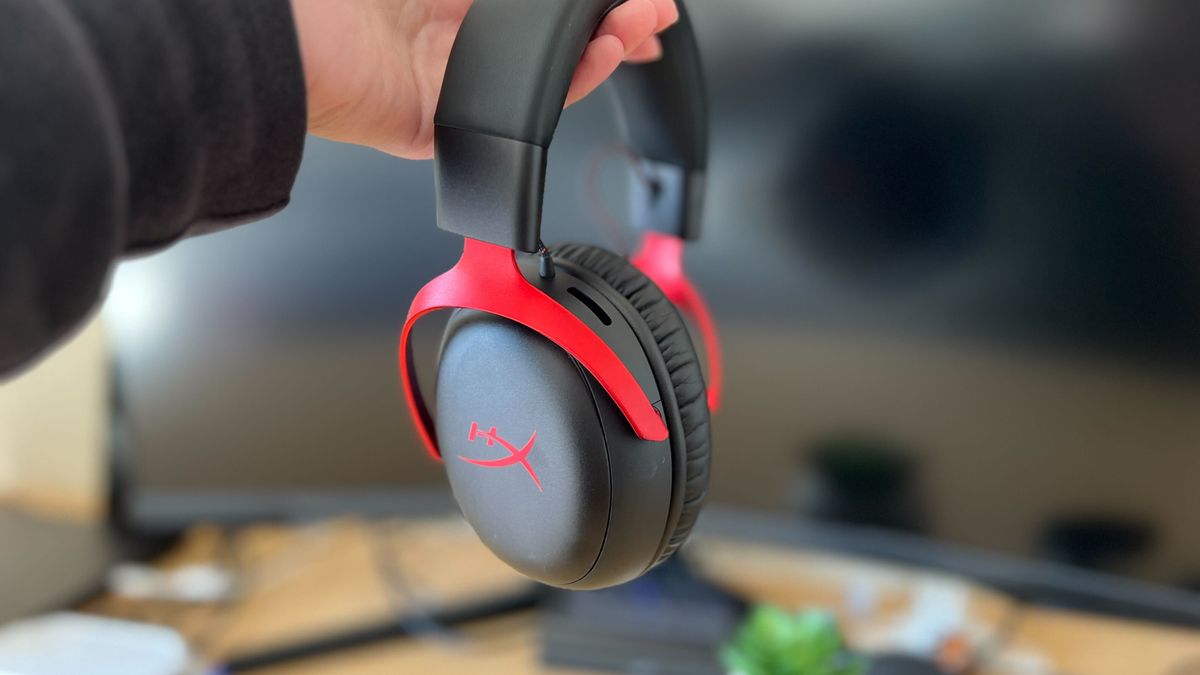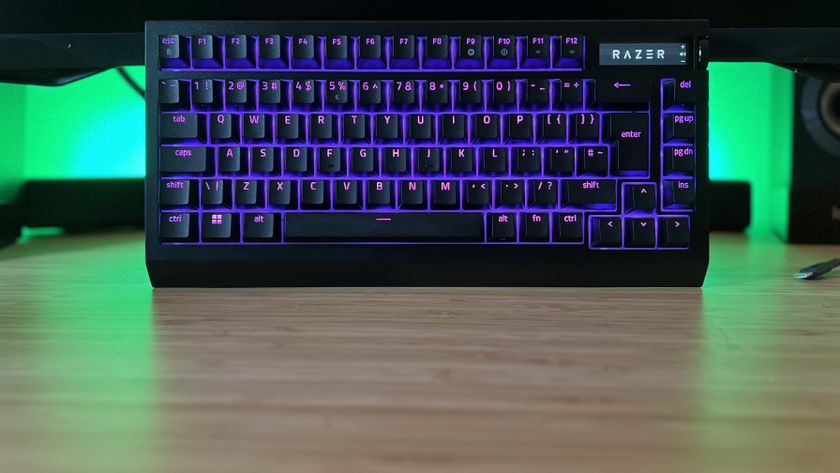12DOVE Verdict
The HyperX Cloud 3 Wireless is a surprisingly limited gaming headset prioritizing comfort and battery life at the expense of functionality. Dropping that Bluetooth or wired connection makes a bigger impact than you might initially expect, and a focus on upper ranges means those after a more textured soundstage will be disappointed. Still, this is a leading headset where comfort and battery life are concerned.
Pros
- +
Generous padding
- +
Excellent battery life
- +
Precise, detailed mid-range
Cons
- -
Limited connection options
- -
Less emphasis in bass ranges
Why you can trust 12DOVE
HyperX’s latest wireless headset takes the updated Cloud 3 form factor and swaps the cable for a 2.4GHz USB-C connection. Considering this is pretty much just a straight swap between a 3.5mm cable and a dongle (there’s no Bluetooth connection option here), the $70 / £70 price increase at launch raised eyebrows. These days, though, the HyperX Cloud 3 Wireless is regularly found for around $129.99 / £129.99 - not too shabby considering there’s a battery and cord-free connection under the hood.
In silo, the HyperX Cloud 3 Wireless is an impressive piece of kit, but with the Razer BlackShark V2 Hyperspeed and SteelSeries Arctis Nova 5X Wireless on the shelves, the competition might be too much. I put the latest wireless option from HyperX to the test over the course of three weeks, to see just where it falls next to the best gaming headsets on the market.
| Price | $169.99 / £169.99 MSRP |
| Connection | 2.4GHz |
| Drivers | 53mm |
| Frequency response | 10Hz - 21kHz |
| Microphone | Uni-directional noise canceling |
| ANC | None |
| Controls | Power, volume, mic mute |
| Battery | 120 hours |
| Weight | 330g |
| Compatibility | PC, PlayStation, Nintendo Switch, Android |
Design

The HyperX Cloud 3 Wireless looks and feels very much like the Cloud 2 Wireless I reviewed back in 2021. One of my favorite elements, the red stitching around the headband, has been abandoned, but you’re still getting those iconic red aluminum yolks (now with a slightly more streamlined curve), a matte black plastic chassis, and a logo emblazoned on each side. I received the black and red model, but there’s a version that does away with these colorful accents for a more uniform aesthetic.
The cups themselves provide a particularly deep cushioning with springy but still nicely firm padding and a leatherette cover. That material does trap some heat within the main driver area, and is vulnerable to cracking and flaking later in life, but feels incredible around the head straight out of the box. Combined with the generous lining across the headband (far more than we were given in the previous generation), there’s plenty of protection from the harder elements of this build. That means the Cloud 3 Wireless is an incredibly comfortable headset. My ears were perfectly housed in between the cushions of each cup with no pinching to worry about, and the clamp force felt just right as well.
The biggest benefit of that leatherette material is noise isolation. Of course, there’s no active noise cancellation here, which meant they were no match for an airplane’s engines, but the seal was impressively tight during everyday play.
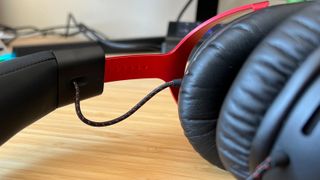
Getting the perfect fit isn’t too difficult. The headband easily adjusts across a series of notches up and down the red aluminum struts. There’s enough freedom of movement to simply place the headset straight on your head and then pull each side to reach the correct fit, but this drop in tension also means sizing can shift in a bag. I took the HyperX Cloud 3 Wireless on a five-day trip and did notice that the design didn’t exactly lend itself to travel. Yes, you’ll get a cloth drawstring case in the box, but with no swivel in the (slightly chunkier) cups, they take up a considerable amount of bag space.
The microphone attaches to the left cup via a 3.5mm port. That’s perfect if you want to use your headset on the go (provided you have a USB-C device), but I personally prefer a flip-to-mute microphone for everyday convenience. At a $169.99 / £169.99 MSRP, this feature isn’t out of the price range either.
Features
Like previous wireless gaming headsets from HyperX, the Cloud 3 only offers a 2.4GHz connection. That’s a little disappointing, especially considering you’ll find a Bluetooth option on the SteelSeries Arctis Nova 5X Wireless and a wired USB mode on the Razer BlackShark V2 Hyperspeed. At today’s going rate of $129.99 / £129.99 (and especially at the original $169.99 / £169.99 launch price) you’d expect alternative connection options.
As it stands, you can use the HyperX Cloud 3 Wireless with PS5, PC, Nintendo Switch, most Android devices, and some Apple devices. That seems like a lot, but dropping a wired option completely wipes Xbox consoles off the menu, and the lack of Bluetooth makes use with gaming handhelds a little trickier as well. I’ve been using the headset with an Asus ROG Ally for the last week and had to sacrifice power for audio.
Controls are split across the left and right cups, with an endless but notched volume wheel on the right and power / mic-mute buttons on the left. The volume wheel itself is one of my favorites I’ve tested. There’s a particularly pleasing tension to this scroller, allowing for quick volume control without the risk of sliding all the way up the scale in one frenzied movement. The notches are a little less pronounced than you’ll find in other gaming headsets as well, which means no annoying clacking sounds as you adjust.
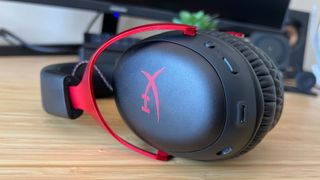
The microphone itself features a unidirectional pickup with noise-canceling baked in. At nearly 8cm long, and with a nicely flexible arm, there’s plenty of room for a comfortable distance.
HyperX also knows how to use a battery. The brand made headlines with its massive 300-hour Cloud Alpha device a couple of years ago, but its mainline Cloud devices have generally stuck close to average in their charges. The Cloud 3 Wireless boasts an impressive 120 hours of battery - that’s the longest-lasting battery I’ve personally tested (and the second largest only to the Alpha that we’ve seen on 12DOVE at all). Considering the slightly more expensive Corsair HS80 Max only runs in at 65 hours, and both the SteelSeries Arctis Nova 5X and Razer BlackShark V2 Pro come in under 80 hours this is a seriously impressive feat. Not only that, but I ran the Cloud 3 Wireless for around 100 hours over the course of three weeks and was still at 30% battery, suggesting that the 120-hour benchmark might be at the lower end of the brand’s estimate.
Like most gaming headset software suites, HyperX’s Ngenuity is ok. You’ve got all your volume, microphone, and EQ settings in here as well as an additional switch for DTS Spatial Sound. There’s nothing revolutionary going on here, and it’s neither a particularly clean nor messy piece of software. EQ changes don’t have the same kind of impact that you’ll hear in something like the SteelSeries Arctis Nova 5X or the far more expensive Astro A50 X. It’s there if you need it, but considering saved settings don’t carry over to console you might only ever touch it for the odd firmware update.
Performance
The HyperX Cloud 3 Wireless is far more concerned with clarity than richness - and this ethos runs throughout the entire sound profile and microphone performance. Far more attention has been paid to higher ranges here, with an under-emphasized bass that leaves explosions feeling a little flat and renders the Cloud 3 pretty redundant when Spotify is concerned. The lower mid-range also suffers the same fate, feeling muddy and underwhelming across music.
If you prefer detail to raw power, then, you’ll love this soundstage. A focused upper bass and upper mid-range mean environmental sounds shine through, dialogue is crisp and forward, and sometimes piercing clangs and scrapes are vivid without being too sharp. Nowhere was this more apparent than in Horizon Forbidden West. I have an area of this map where I like to test gaming headsets; a sparse glade with some roaming Ravagers. Why? Because very few headsets can actually balance all those machine sounds in a way that doesn’t completely overwhelm the soundstage in the mid-range. The HyperX Cloud 3 Wireless is the best headset for the job I’ve tested so far.

In dialing down lower ranges, environmental sounds can pull through without crashing into each other. Rather than an often unpleasant cacophony of overblown machine noises, I could pick out footsteps crunching without overtaking the entire soundstage. Would I have preferred a more textured, robust bass range? Probably yes - this is one small experiment in a sea of testing games, after all. But it does go to show how far the Cloud 3 Wireless is geared towards accuracy in the mids - something very few headsets aim for.
While that does mean the overall soundstage is slimmer than you’ll find in other devices, there’s still plenty of room for directional cues. I was easily able to pick out movement and reloads across CS:GO, as well as enemy locations in Fallout 4 and Doom Eternal.
Similarly, the microphone provides a crisp, clear vocal representation but doesn’t do much else. There’s very little warmth to this mic’s tones, which makes for an easily understandable line of communication but not one that will lend itself well to recording or streaming.
Should you buy the HyperX Cloud 3 Wireless?

The HyperX Cloud 3 Wireless excels in what it wants to do. The question is whether or not that’s enough for today’s market. It wants to bring you a detailed mid-range with clear directionality, natural audio, and a soundstage that prioritizes environmental cues and dialogue, and it does so better than any headset I’ve tested. It wants to cut the cord of the previous wired model, and the resulting 2.4GHz connection is reliable, easy, and rock-solid. It wants to steer clear of the charging cable, taking inspiration from its Cloud Alpha predecessor to offer long-lasting battery life in a completely different league to the rest of its competition.
But without Bluetooth, a wired connection, onboard EQ setting storage, a robust lower range, and a soundstage that works across both games and music, I can’t say the HyperX Cloud 3 Wireless is doing enough to put it above similar options from SteelSeries and Razer. Of course, no headset can do it all - but a lot do far more than this for the cash.
I would recommend the HyperX Cloud 3 Wireless to PC or PS5 players who primarily play story-forward games like Horizon, The Last of Us, Baldur’s Gate 3, and Skyrim. The games where dialogue matters more than the satisfaction of an explosion or the footsteps of another player. Equally, if you’re tired of constantly charging that 120-hour battery life might be enough to sway you towards HyperX. Otherwise, the Razer BlackShark V2 Hyperspeed is the better buy for PC players and SteelSeries’ Arctis Nova 5X is still the top dog for console players in this price range.
| Specs | HyperX Cloud Wireless 3 | Razer BlackShark V2 Hyperspeed | SteelSeries Arctis Nova 5X Wireless |
|---|---|---|---|
| Price | $169.99 / £169.99 MSRP | $129.99 / £129.99 | $129.99 / £129.99 |
| Connection | 2.4GHz | 2.4GHz / Bluetooth / Wired | 2.4GHz / Bluetooth |
| Drivers | 53mm | 50mm | 40mm |
| Frequency response | 10Hz - 21kHz | 12Hz - 28kHz | 20Hz - 22kHz |
| Microphone | Unidirectional noise canceling | Super Wideband Unidirectional | Bidirectional noise cancelling |
| ANC | None | None | None |
| Controls | Power, volume, mic mute | Power, volume, playback, profile / Bluetooth smartswitch, mic mute | Power, volume, Bluetooth quick switch, mic mute, chat mix |
| Battery | 120 hours | 70 hours | 60 hours |
| Weight | 330g | 280g | 265g |
| Compatibility | PC, PlayStation, Nintendo Switch, Android | PC, PS5, PS4, Nintendo Switch, mobile | PC, PlayStation, Xbox (on X model), Nintendo Switch, mobile |
How we tested the HyperX Cloud 3 Wireless
I used the HyperX Cloud 3 Wireless for all play across a period of three weeks. In that time, I primarily tested on Fallout 4, Gears Tactics, and CS:GO on PC as well as Doom Eternal, Horizon Forbidden West, and Assassin’s Creed: Mirage on PS5. I also took the Cloud 3 Wireless headset on a five-day trip, during which I listened to music, podcasts, and tested on the Asus ROG Ally. For more information on how we test gaming headsets, check out the full 12DOVE Hardware Policy.
We’re also rounding up all the best Xbox Series X headsets and the best PS5 headsets on the market. Or, take a look at the best PC headsets available.

Managing Editor of Hardware at 12DOVE, I originally landed in hardware at our sister site TechRadar before moving over to GamesRadar. In between, I've written for Tom’s Guide, Wireframe, The Indie Game Website and That Video Game Blog, covering everything from the PS5 launch to the Apple Pencil. Now, i'm focused on Nintendo Switch, gaming laptops (and the keyboards, headsets and mice that come with them), PS5, and trying to find the perfect projector.
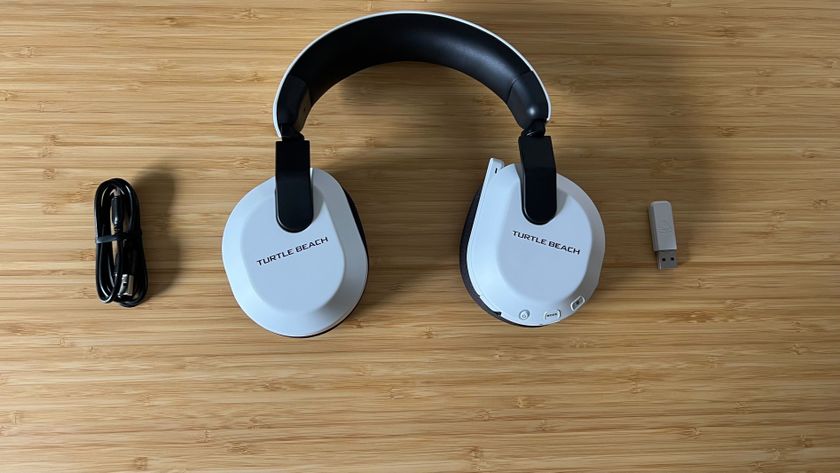
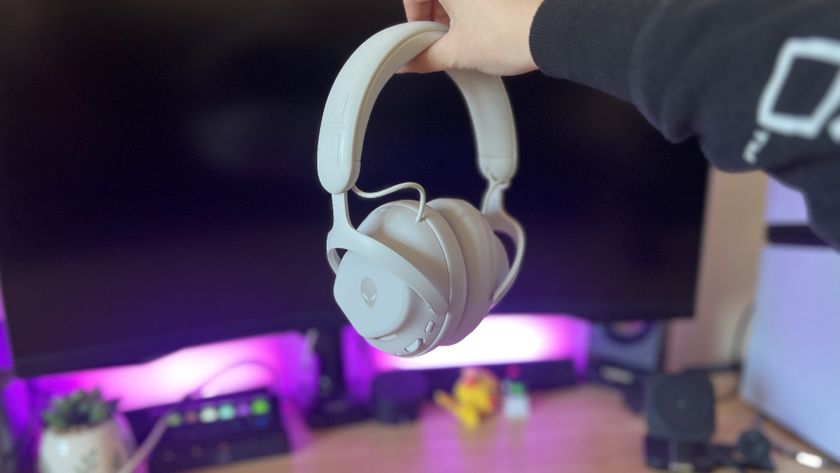
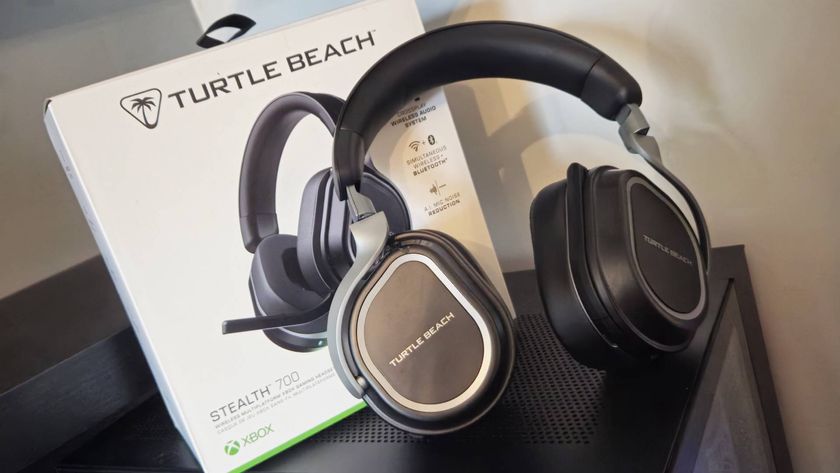

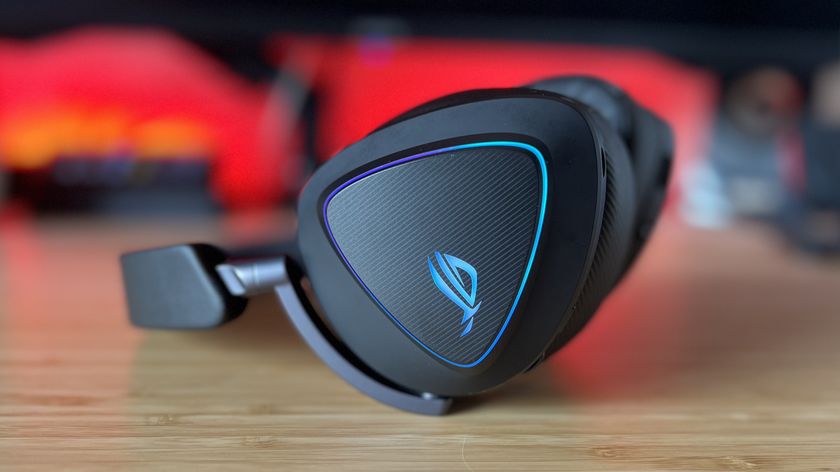
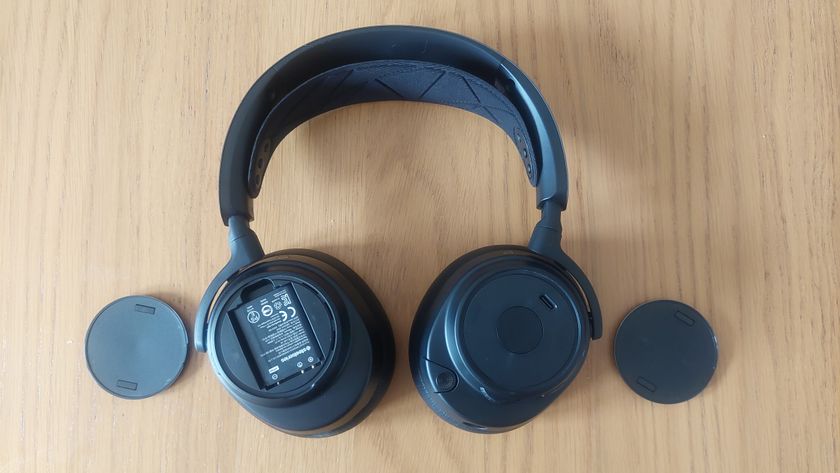

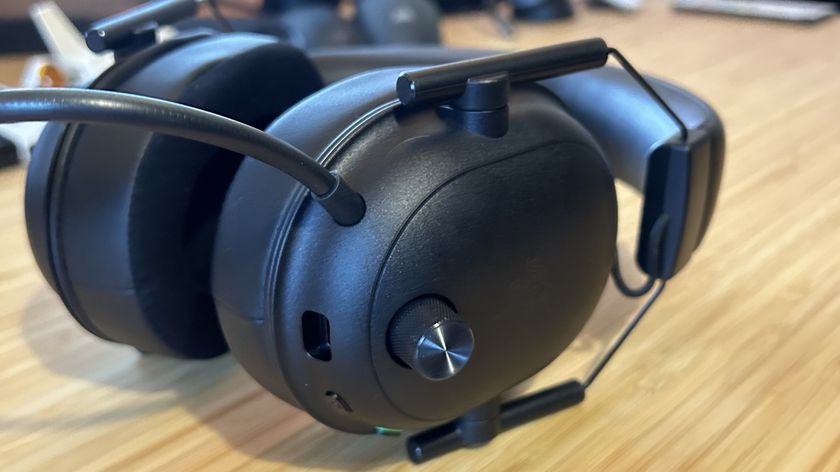
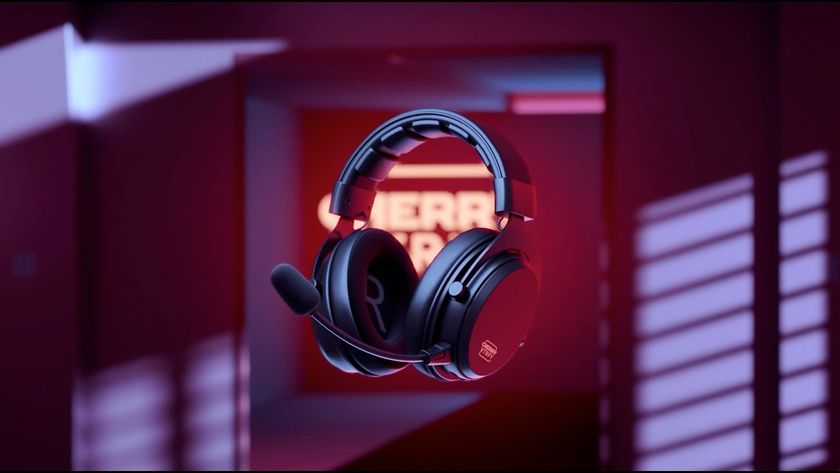
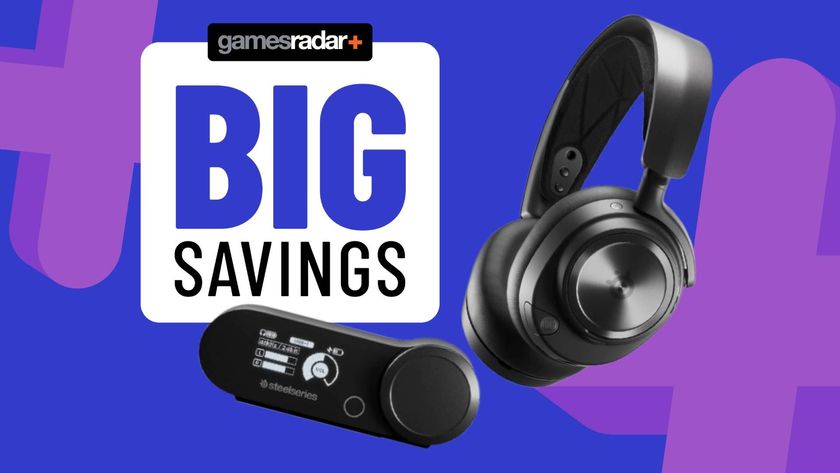

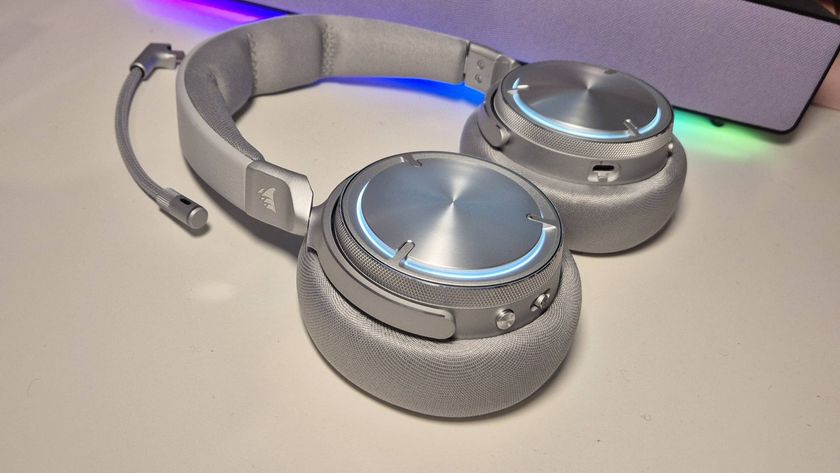







The surprise theme of today's Nintendo Direct was classic PlayStation franchises getting a comeback without Sony's involvement

The classic Fox X-Men are returning in Avengers: Doomsday, and I've got a really bad feeling about this

Unannounced Hogwarts Legacy DLC reportedly canceled, partly because the studio wasn't sure it'd be worth players' money
